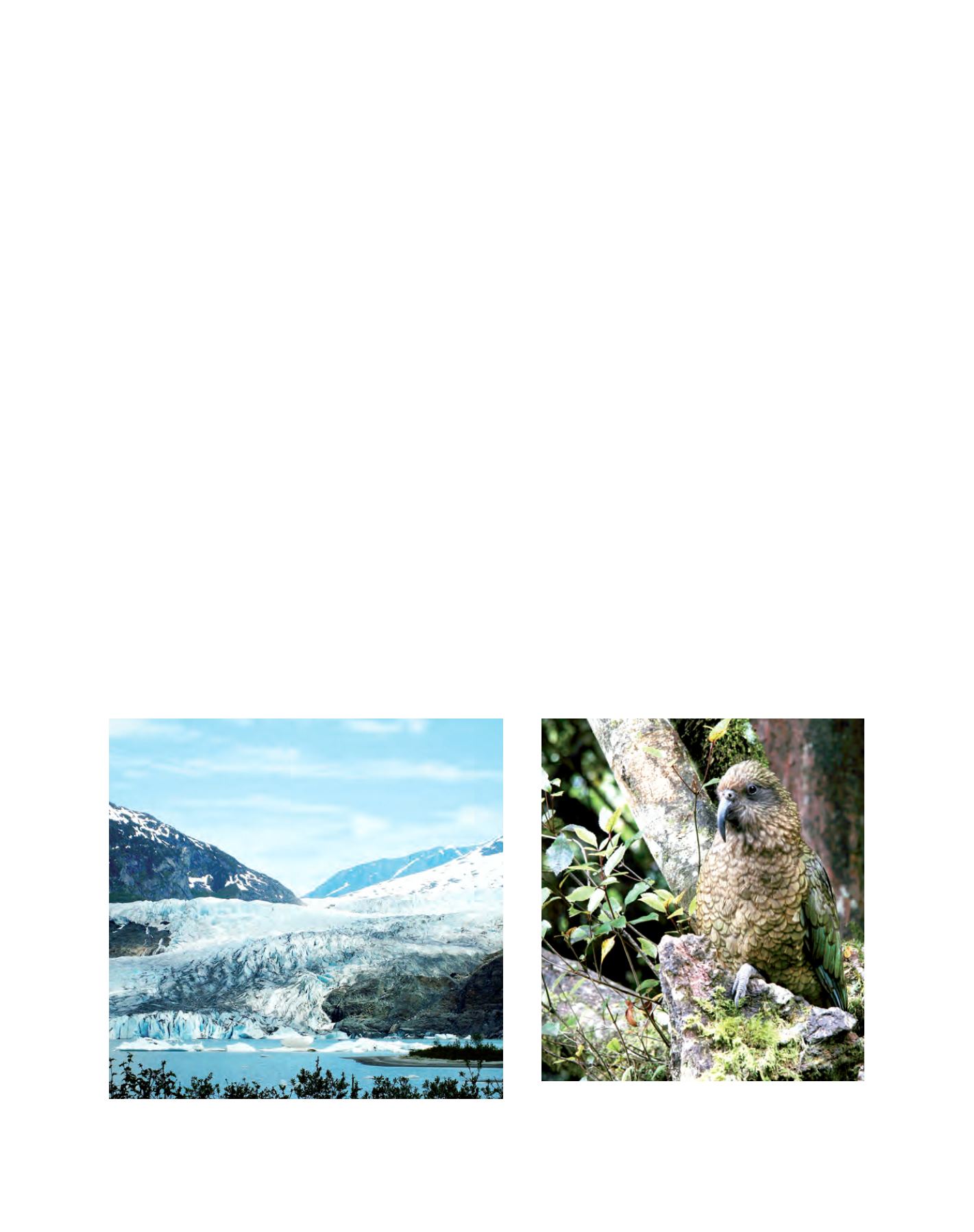

[
] 141
O
bserving
, P
redicting
and
P
rojecting
C
limate
C
onditions
often have a difficult time convincing policy-makers of
the climate change impacts they observe in the field.
11
The
IPCC, in its fourth assessment report, concluded with ‘very
high confidence’
12
that climate change is already affecting
living systems.
The Ad Hoc Technical Expert Group (AHTEG) on
biodiversity and climate change was convened in response
to a decision from the Conference of the Parties to the
Convention on Biological Diversity (CBD). AHTEG was
established to provide biodiversity related information to
the United Nations Framework Convention on Climate
Change (UNFCCC) through the provision of scientific and
technical advice on the integration of the conservation and
sustainable use of biodiversity into climate change mitiga-
tion and adaptation activities. One of the tasks of the group
was to identify relevant tools and methodologies for assess-
ing the impacts on, and vulnerabilities of, biodiversity as a
result of climate change. Results fromAHTEG revealed that
key uncertainties limit our ability to project climate change
impacts on ecosystems, but that despite their limitations,
bioclimatic models provide a useful first assessment of the
vulnerability of biodiversity.
Identifying climate data needs within the biodiversity
community
There are a number of research needs and gaps with regards
to assessing the impacts of climate change on biodiversity.
Some of these have been filled, but many remain. For
example, there is still a lack of extensive, readily avail-
able quantitative information on many species globally.
13
A review of relevant literature conducted in 2006 revealed
a continuing terrestrial bias and identified additional gaps
with regards to geographic distribution.
14
In particular,
validation of suchmodels, and also demonstrated that uncertainty can be
reduced by selecting the most consensual projections. This method can
provide good range projections of species for the purposes of conserva-
tion planning and biodiversity management.
7
Due to the complexity of natural systems, predictive errors are inevi-
table. However, for certain species and at certain scales, the bioclimatic
envelope approach can provide a first approximation of the potential
impact of climate change on species distributions. Nevertheless, biocli-
matic models should only be applied and interpreted with a thorough
understanding of the limitations involved. In particular, it should be
noted that these models assume no barriers to movement which, in the
case of highly fragmented ecosystems, may deliver a significant under-
estimation of the scale and scope of climate change impacts.
Change in biome
8
area simulated by coupled Global Circulation
Models and Global Vegetation Models may be used to estimate
changes in species richness, if the assumption is made that the biome’s
climatic definition is to be used as a proxy for the climatic envelope
of multiple resident species.
9
These types of models may not be well
suited to estimate changes in biodiversity, since they usually assume
that ecosystems or biomes simply shift location while maintaining
their current composition and structure.
10
Policies related to the conservation of biodiversity and climate change
need to be informed by the best possible recent scientific findings.
However, these findings depend on the accuracy of modelling techniques
and confidence in projections of future climate change and its impacts.
Policy formulation and decision making is therefore often based on a
certain degree of scientific uncertainty. It is important that policy makers
are well informed of this uncertainty.
For IPCC experts, assessing the extent to which recent observed
changes in biodiversity were caused by climate change was a very diffi-
cult task. These difficulties were partly due to the differences in approach
between biologists and other disciplines, and in perspectives of what
constitutes an important factor of change. Moreover, field biologists
Mendenhall Glacier: the melting of glaciers is accelerating rapidly in Alaska. Animals
that dwell on or near glaciers may be affected by the disappearance of their habitats
Kea, an alpine parrot endemic to New Zealand’s alpine areas. The
Kea is considered an endangered species. Potential threats for this
species include the effects of climate change on alpine areas
Image: Toan Cung
Image: Camellia Ibrahim
















